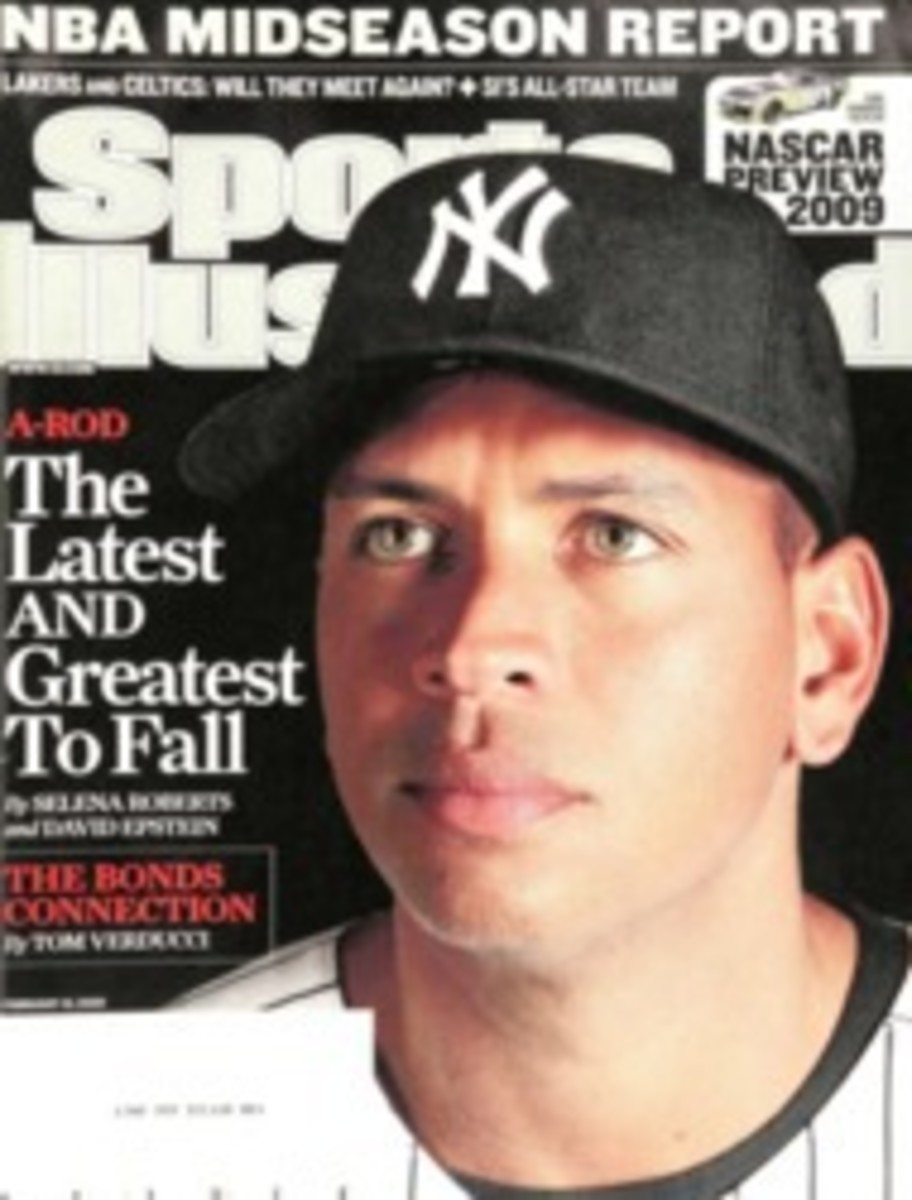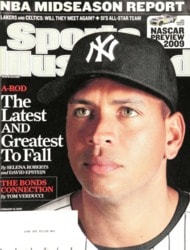
TAKING STOCK
SUBTRACTION BY ADDITION
CUP RACING's super teams—Hendrick Motorsports, Joe Gibbs Racing, Richard Childress Racing and Roush Fenway Racing—combined to fill all 12 berths in the 2008 Chase, and they return at full strength despite the economic downturn. (RCR even added a fourth car.) But a steep drop in sponsorship dollars forced several smaller outfits into dramatic realignment. Most notable were the mergers of Chip Ganassi Racing with Dale Earnhardt Inc. and Gillett Evernham Motorsports with Petty Enterprises. Those four teams accounted for only two wins last year, both by Gillett Evernham's Kasey Kahne.
Amazingly, Richard Petty probably considers himself lucky. Though he'll have no say in the day-to-day operation of the new team (and son Kyle loses his regular Cup ride), the King's name will stay in the game as the combined operation becomes Richard Petty Motorsports. Ray Evernham, on the other hand, is effectively out. The man who won three Cup titles as a crew chief with Jeff Gordon says that he is retired and maintains only a "consulting" role with the team he had owned since 2000.
Other big names in reduced roles this season include Robert Yates, who merged with Hall of Fame Racing, and the venerable Wood Brothers, who plan to run only a 12-race schedule with 53-year-old former series champ Bill Elliott at the wheel.
STARTING FROM SCRATCH
THERE'S NO questioning the potential of one new operation. Stewart-Haas Racing will run two cars in 2009—one driven by team co-owner and two-time Cup champ Tony Stewart, the other by '08 Daytona 500 winner Ryan Newman. Stewart's new crew chief is Darien Grubb, who won three races in the same capacity at Hendrick, including the '06 Daytona 500. Newman's is Tony Gibson, the car chief for Jeff Gordon from 1998 through 2002. But more than any other team, this one might be hurt by NASCAR's ban on off-season testing.
Stewart and Newman head to Daytona in cars they will have tested just once. Both drivers insist that performance isn't likely to be compromised by a lack of seat time, pointing to the amount of work they've been doing in the shop and with simulators, but others are skeptical. "They have to say that," says Roush Fenway driver Jamie McMurray. "What else are you going to say when you're not going to the track?"
One reason for confidence at Stewart-Haas is the team's open relationship with the powerful chassis and engine programs at Hendrick Motorsports. Any struggles for the new team this year aren't likely to be the result of inferior equipment. Newman, for one, has already noticed a significant difference. He left Penske after nine years in part because he wasn't satisfied with the team's engines. But after only one test with Stewart-Haas, Newman says he's going to have more horsepower in '09.
GETTING PAID BY THE LAP
AT NASCAR's annual media conference in Charlotte last month, chairman Brian France revealed that 15 new team owners had certified chassis with NASCAR's research and development shop during the off-season, the first step for anyone looking to enter a car in a Cup race in 2009. The news suggests that, with openings expected in the 43-car fields of some races as a result of the poor economy, some unattached racers see an opportunity to cash in. Count former Cup regulars Jeremy Mayfield and Joe Nemechek, as well as former Daytona 500--winning crew chief Tommy Baldwin among them. It's a situation reminiscent of NASCAR's early days, when independent one-car teams were crucial to the growth of racing.
But if and when any of these fledgling teams make it into a race, don't expect them to challenge for the lead. More likely, they'll run as "start-and-park" operations, turning laps merely to collect tail-end prize money. (For instance, the last-place finisher at the 2008 Daytona 500 took home $256,735.) The practice, which is known as "stroking," is almost as old as NASCAR. Past practitioners include no-less eminent a figure than Richard Childress. "That's where our character comes from," says NASCAR president Mike Helton. "If we go through another cycle like that, we will see the characters come out."
ROOKIE SHOWDOWN
ONLY TWO drivers will be competing this season for Rookie of the Year: 18-year-old Joey Logano, an adenoidal, peach-fuzzed speed demon who's one of the most-hyped newbies in recent memory; and Scott Speed, a 26-year-old free spirit who migrated to NASCAR last year from the Formula One circuit, where he went winless in 28 starts in 2006 and '07. On paper Logano, who earned his first Nationwide Series victory at Kentucky last year in only his third start, looks to be the favorite. He is taking over Tony Stewart's old ride at Joe Gibbs Racing, which comes complete with the team's two-time Cup-winning crew chief, Greg Zipadelli. "I have everything I need to win except experience," says Logano. Speed is driving for Team Red Bull, which has yet to win a race in two Cup seasons.
Once on the track, however, the competitive gap could close quickly. In three Cup starts last season Logano appeared out of his depth, failing to finish better than 32nd. (An additional three races for Hall of Fame Racing were scrapped.) With the lack of off-season testing, it's hard to expect much more from him at the start of 2009 as he learns to drive the new Cup car—a skill some veterans still haven't mastered. Speed made all five of his starts in the Chase, and though he finished 30th or worse in four, he ran 16th in the season finale at Homestead. Speed also had a win and nine top 10s in 16 Truck Series starts. "I'm certainly better now than I was at the end of last year," he says. "I'm improving every time by a fair step."
GREEN FLAGGING
NASCAR, LIKE so many other industries, is making noise about going green. In support of an environmental-awareness initiative it is launching, NASCAR, which has also consulted with former vice president Al Gore, named a managing director for Green Innovation, Mike Lynch, a strategic planning consultant whose job is to identify and develop opportunities for industrywide environmental advancements. On the track, though, little is changing. Flex fuel? NASCAR calls that a "very important" objective but one that's "well down the road." Indeed, last month NASCAR chairman Brian France tweaked the Indy Car circuit for switching to ethanol in '06, noting that "[ethanol] puts more carbon emissions into the atmosphere than fossil fuels." So far about the only concrete measures being taken are the tire and oil recycling programs already in operation at NASCAR-affiliated tracks, as well as extensive public-education programs promoting the purchase of fuel-efficient cars and gas-saving auto care.
PHOTO
NIGEL KINRADE/AUTOSTOCK
PETTY CONCERNS Kahne (9) will try to keep his new team up front.
PHOTO
JERRY MARKLAND/GETTY IMAGES FOR NASCAR
TEAMWORK Owner-driver Stewart surrounded himself with top talent.
PHOTO
NIGEL KINRADE/AUTOSTOCK
EASY DOES IT For Nemechek and others, winning may not be the first objective.
PHOTO
NIGEL KINRADE/AUTOSTOCK
THE KID Only 18, Logano takes over Stewart's ride.
PHOTO
NIGEL KINRADE/AUTOSTOCK
THE OUTSIDER Speed comes to NASCAR from the F/1 circuit.
PHOTO
MARK J. REBILAS/US PRESSWIRE (GAS MAN)
BURNING ISSUE A move to flex fuel is "well down the road."

